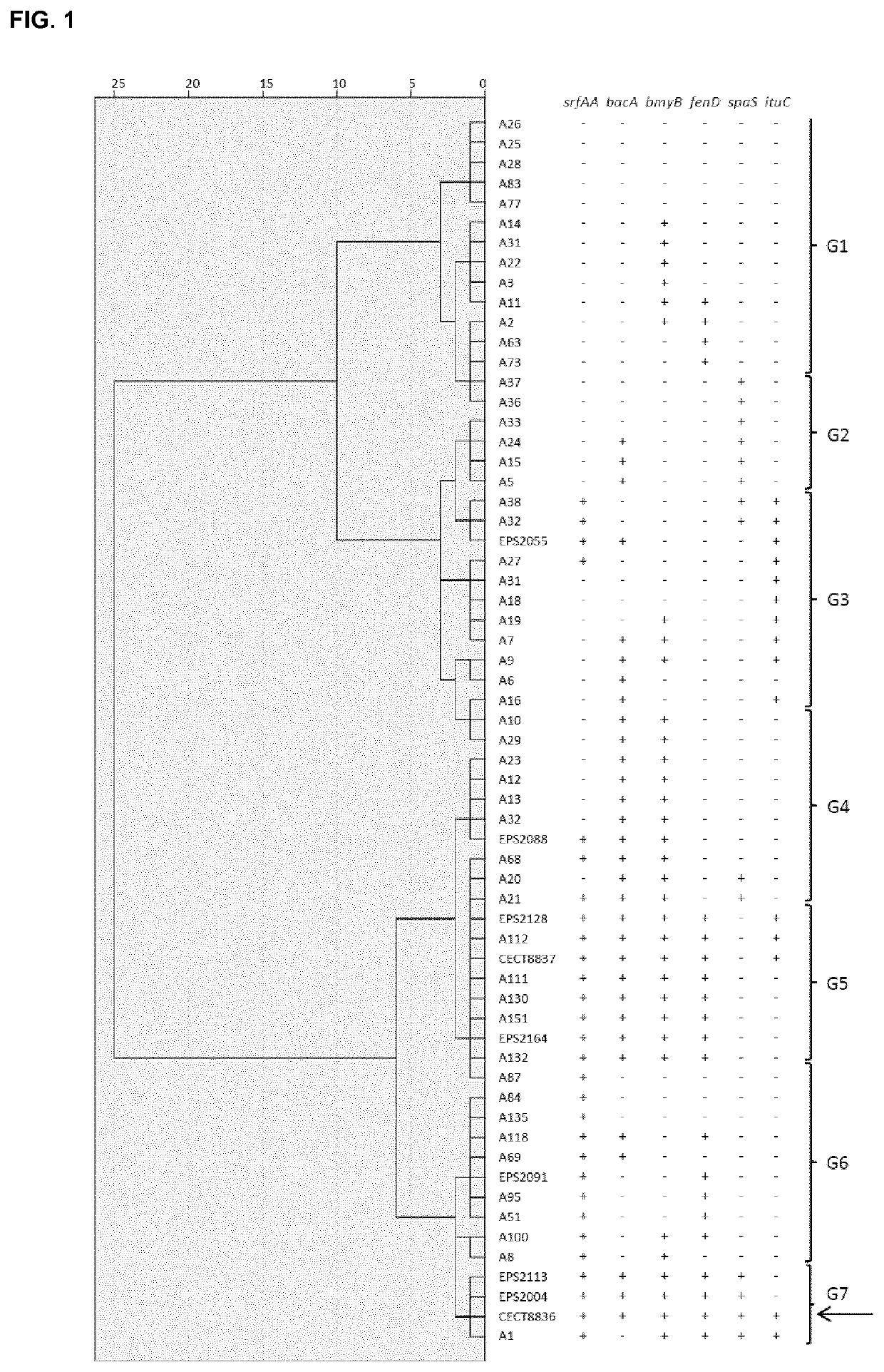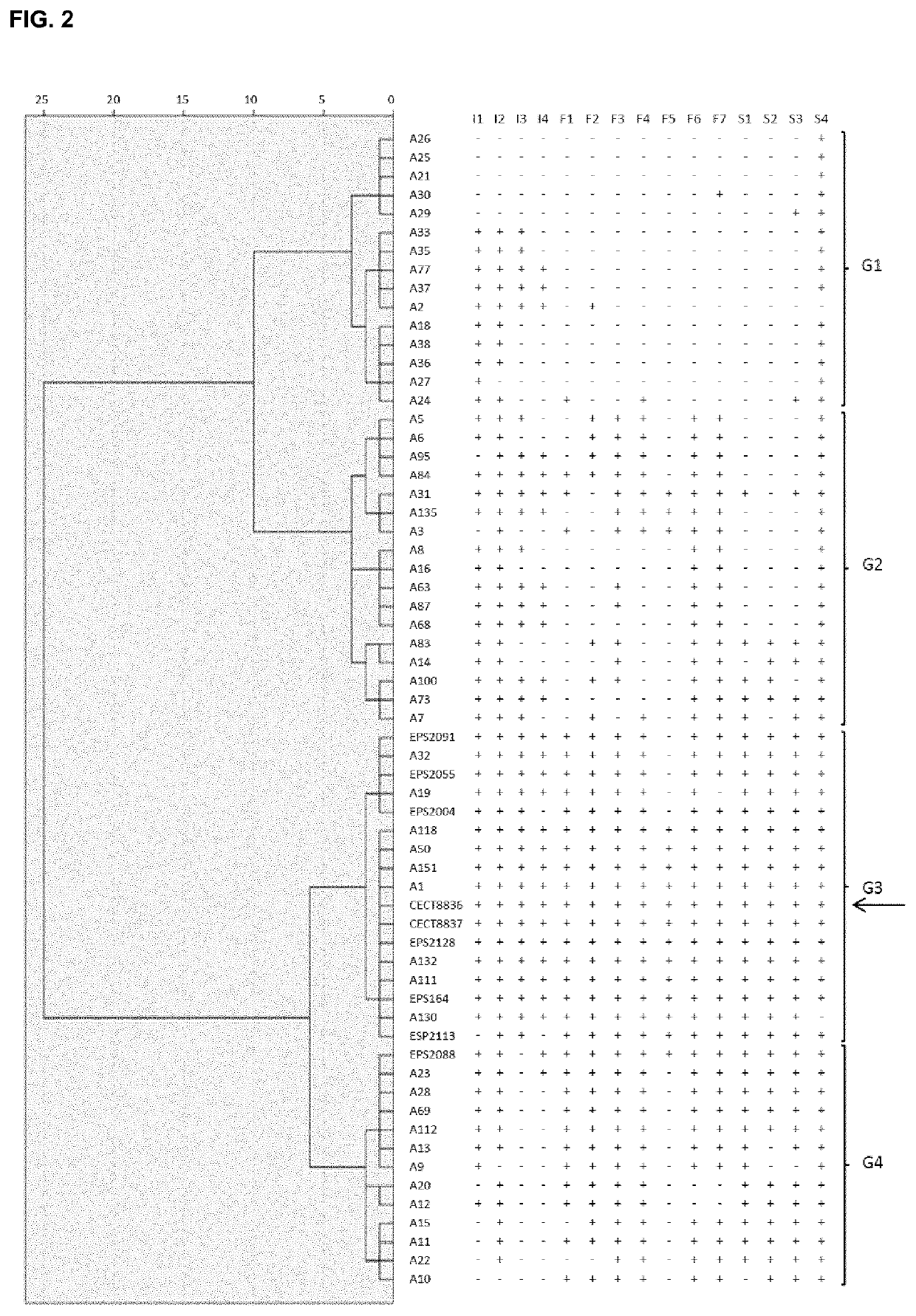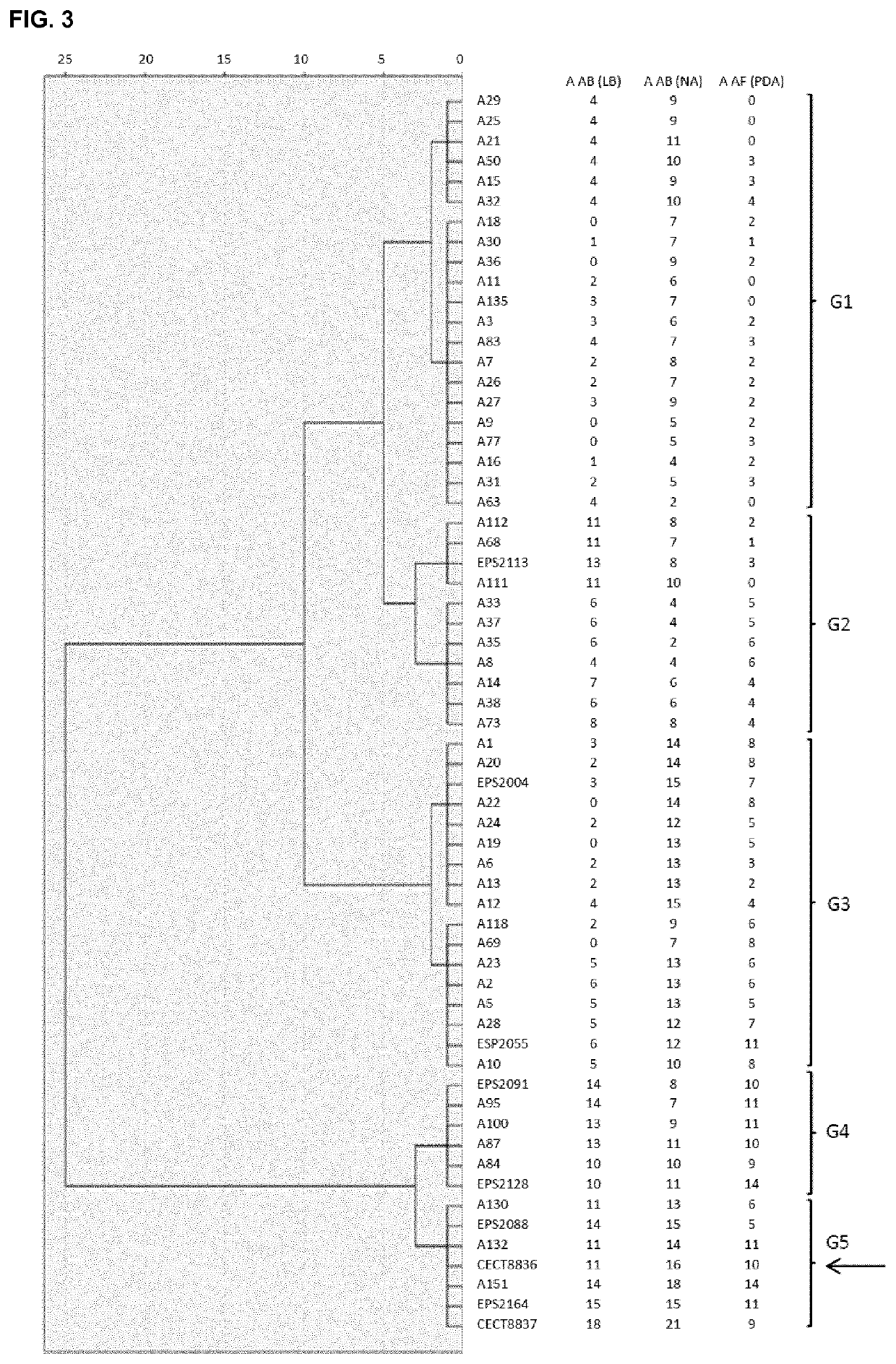Strain of Bacillus amyloliquefaciens and its use in the control of diseases caused by bacteria and fungi in plants
a technology of bacillus amyloliquefaciens and strain of i>bacillus amyloliquefaciens /i>, which is applied in the field of strain of i > bacillus amyloliquefaciens /i> and its use in the control of diseases caused by bacteria and fungi in plants, can solve the problems of limited efficacy, adverse environmental impact, and limited effectiveness, and achieve the effect of inhibi
- Summary
- Abstract
- Description
- Claims
- Application Information
AI Technical Summary
Benefits of technology
Problems solved by technology
Method used
Image
Examples
example 2
reparation of the Strains of the Invention for Obtaining Concentrated Cell Suspensions or Extracts from the Culture Medium
[0081]The strain of the invention, preferably in the exponential growth phase, was inoculated in LB broth to a final concentration of 3%. The inoculated culture medium was incubated at 30° C. and pH 7, with stirring at 500 rpm in “batch” cultures. In bioreactor cultures oxygen concentration was 40%. In the growth stationary phase, after 24 h from the culture initiation, a cell concentration of 2.0×109 CFU / mL was obtained.
[0082]In order to obtain a concentrated cell suspension and the culture cell-free supernatant, the material obtained in the stationary phase was subjected to centrifugation at 8000 rpm for 15 min. The pellet containing cells and spores was resuspended in a small volume of phosphate buffer to obtain a concentrated cell suspension of 1010 CFU / mL. The cell-free supernatant resulting from centrifugation, containing the culture medium components trans...
example 3
Controlling Infections Caused by Phytopathogenic Bacteria in Plants by Preventive Treatments with the Strains of the Invention
[0083]In order to demonstrate the efficacy of the strains of B. amyloliquefaciens of the invention in controlling bacterial diseases, tests with plants under controlled environment conditions in a greenhouse were carried out. The study was conducted with the 8 isolates, which showed increased production of cyclo-lipopeptides, presence of biosynthetic genes of antimicrobial peptides and broader spectrum of in vitro antagonistic activity against different bacterial pathogens. Tests were performed in 4 different pathosystems, more specifically, the capacity of the 8 strains in inhibiting infections caused by P. syringae pv. syringae and E. amylovora in pear trees, by P. syringae pv. tomato in tomato plants and by X. axonopodis pv. vesicatoria in pepper plants was determined.
[0084]For the tests with pear trees, self-rooted 2-year-old plants of the Conference vari...
example 4
the Production of Antimicrobial Peptides in Different Culture Media and Incubation Conditions
[0090]The uniqueness of the strains CECT8836 and CECT8837 highlights the interest in determining the nature of their antagonistic and inhibitory activity against different pathogens. First, it was verified that there was antimicrobial activity in the extract resulting from the “batch” growth of such strains in LB broth and in modified saline medium at 28° C., pH 7.0 and 20% pO2, and how this activity varied along the cultivation process was determined. To do this, culture aliquots were taken at different times, filtered to remove the cells, lyophilised and the resulting material resuspended in water. The extract was tested using the contact test method, by applying aliquots of 20 μl extract to 180 μl a suspension adjusted to 10*8 CFU / mL of E. amylovora and P. syringae pv. syringae. After 2 hours, the growth inhibition of each suspension compared to water treated control was determined. When ...
PUM
| Property | Measurement | Unit |
|---|---|---|
| temperature | aaaaa | aaaaa |
| temperatures | aaaaa | aaaaa |
| temperature | aaaaa | aaaaa |
Abstract
Description
Claims
Application Information
 Login to View More
Login to View More - R&D
- Intellectual Property
- Life Sciences
- Materials
- Tech Scout
- Unparalleled Data Quality
- Higher Quality Content
- 60% Fewer Hallucinations
Browse by: Latest US Patents, China's latest patents, Technical Efficacy Thesaurus, Application Domain, Technology Topic, Popular Technical Reports.
© 2025 PatSnap. All rights reserved.Legal|Privacy policy|Modern Slavery Act Transparency Statement|Sitemap|About US| Contact US: help@patsnap.com



